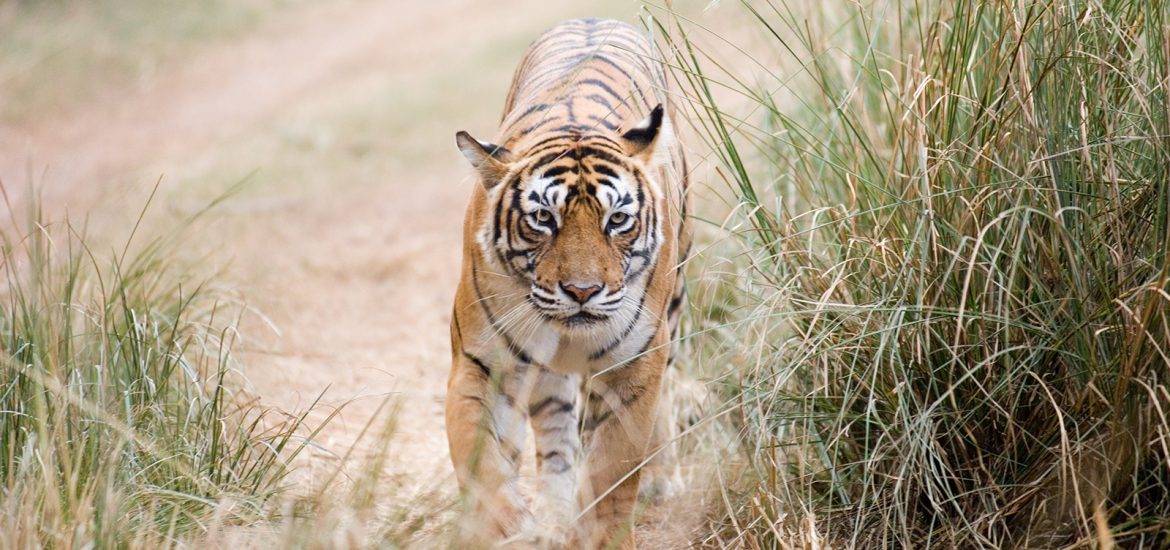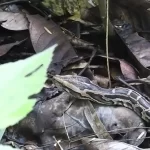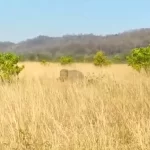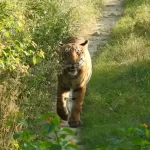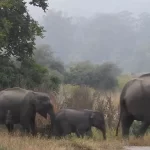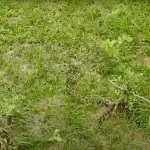The beginning of summer season not only brings soaring temperatures but also a great distress to the wildlife of Corbett Tiger Reserve bringing along intricate ecological changes affecting the flora and fauna. Lagging monsoons and negligible rains contribute to a severe lack of water in the reserve playing havoc with human and the wildlife.
The rabi crop yield experiences a reduction for the farmer whilst profuse forest fires take a serious toll on the national park’s ecosystem. A lack of preparedness in the form of non-clearance of fire lines on time are the major contributors to the uncontrollable fire spread.
GLOBAL WARMING TURNS UP THE HEAT
Meantime, the effects of global warming were seen in December-January when Tendu (Diospyros melanoxylon or Indian Ebony tree or bidi patta) started fruiting while sloth bears (Melursus urcinus) are still in hibernation. Similarly Sal (Shorea robusta or the Reliable timber tree), the area’s dominant tree, do not begin to flower until the first week of May.
The above changes have a prominent effect on the population density as well as animal sightings of animals in Corbett’s tourism zones.
The sightings of the Royal Bengal Tiger have drastically gone down owing to the recent untimely and mysterious deaths of four young tigers during the months of December to January. Sightings in Jhirna become unpredictable owing to water shortage issues and Bijrani faces the same issues of erratic sightings due to water shortages. Young and powerful tigers occupy the main water sources while the weaker ones move out to look for water or become opportunistic while taking their share of water from others territory.
LATE BLOOMERS
Delayed flowering of Sal might result in late seed dispersal. But other dry and moist decidous trees, associates of the Sal, also flower at this time. Amaltas (Cassia fistula or Indian Laburnum) flower along with Shisham (Dalbergia sissoo or North Indian Rose Wood), Kusum (Schleichera oleosa or Indian Lac), Haldu (Adina cordifolia or Indian Turmeric) besides Dhak (Butea monsperma or Flame of the Forest).
The red fire flowers of Dhak or Palla are strikingly visible from a distance. As one approaches a Dhak-infested area, the forest looks as if it has caught fire. Bakuli (Anogeissus latifolia or Indian Axle Wood Tree), one of the associates of Sal also flowers along with Semal (Salmalia malabarica or Indian Kappock tree) whose pods burst with flying “Budhias” (a child’s moniker for the floating cotton balls!) The Rohini (Mallotus phillippensis or mark of the Indian married woman tree) start to fruit and offer excellent relief to the male elephant about to attain its state of ‘Musth’.
TIGER’S TALE
A tiger’s summer routine includes finding and securing a water source. Tigers follow marked routes when reaching water bodies, as is the case with the Patharwa Nulla water source, a stone’s throw from Jim’s Jungle Retreat- a wildlife resort in Jim Corbett. Noted male leopards are a sighting based on the availability of water near our tiger resort in Corbett.
A similar schedule has also been observed at the high bank or Gorkha Sot while on the way to Dhikala. In Bijrani, waterhole No. 6 and Garjia Sot are the most sought after vantage points for visitors and in Jhirna, a patient wait at the waterhole in Jarh Paharh as well as Kothirao watch tower have yielded good tiger sightings.
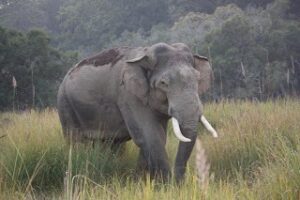
ELEPHANT BEAT
Following the harvest, agricultural fields on the park’s peripheries lay barren. The elephant population keen on trying their luck continue their search for bamboo outside the forest towards Dhela and Laldhang. It is noted that elephant sightings have increased in the recent times outside the Jhirna and Bijrani tourism zones. A frequent sighting of elephant population in small and medium-sized herds is witnessed in the Dhikala zone.
An occasional big tusker can often be sighted in the vicinity of the largely female herds, giving an indication that the first pre-monsoon showers might well induce a fight among the males for their right over an elephant harem.
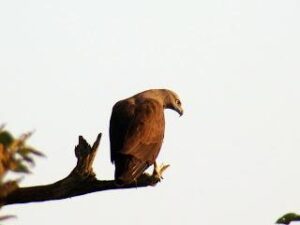
BIRDING PARADISE
On the birding front, some of the peninsular migrants such as paradise flycatcher, Indian pitta, brain fever bird or Common Hawk cuckoo, etc. have already arrived. The paradise flycatcher tail can be spotted as the hidden males begin to transform their colors. The Indian cuckoo or ‘Kaphal pako’ also known as the Indian cuckoo brings along the message of the Indian black current ripening indicating it’s time to return to the hills!
In the meantime, the mating season for the Yellow-footed Green Pigeon and Emerald Dove commences.
The flowering of trees in the forests keeps the insectivorous birds busy, whilst the breeding time for our resident raptor population commences. Territorial calls and abrupt fights can be heard all around among the Changeable Hawk Eagle, Crested Serpent Eagle, Indian Honey Buzzard and the Pallas’s Fishing Eagle. The smallest raptor of Corbett, the Collared Falconet, also breeds at this time.
The Great Indian Hornbill and the Oriental Pied Hornbill can be spotted on the top canopies of semi-evergreen trees. The Great Hornbills make sounds in search for a possible mate to breed. Their sounds of calling are similar to that of Langur’s alarm on seeing a tiger!
In spite of a lazy and often difficult summertime for the park’s wildlife, one can discover abundant animal and bird behavior in the region.
We hope to see you here soon! Thanks and happy sighting!
